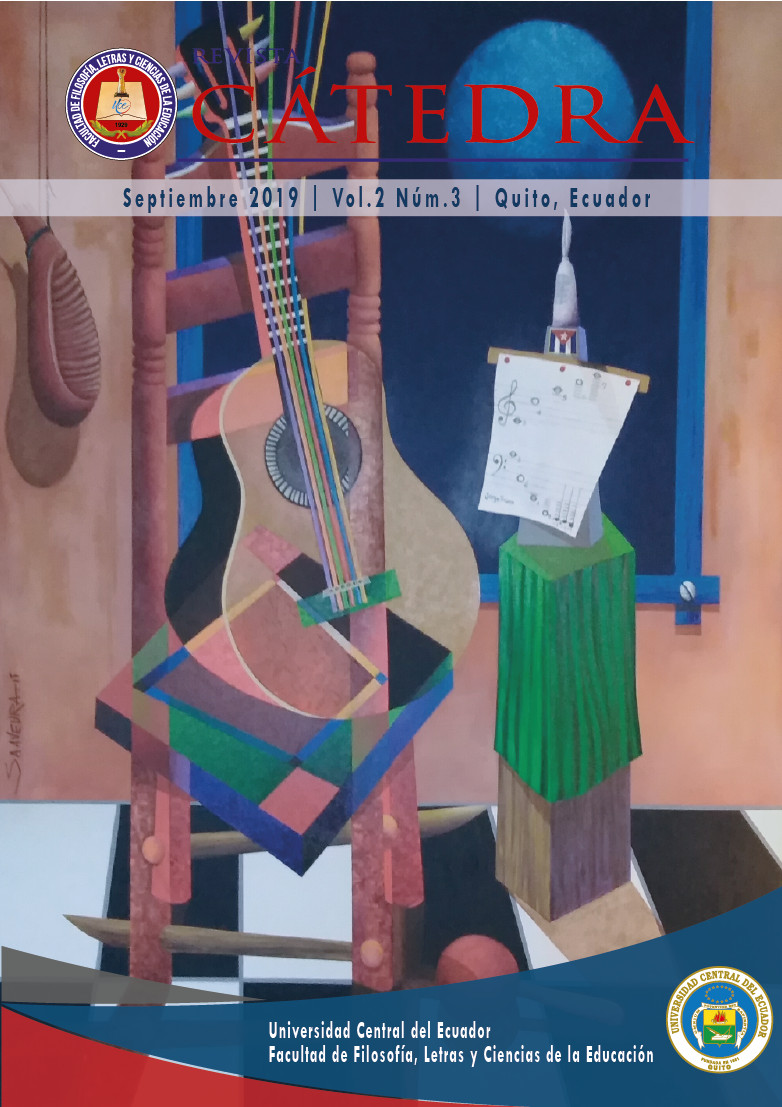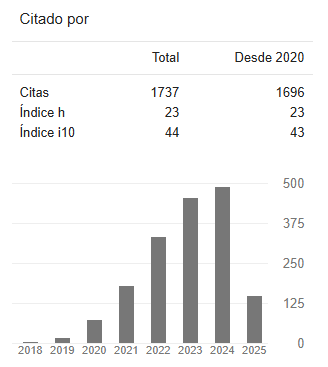Aprendizaje significativo de la luminancia por el método punto por punto
DOI:
https://doi.org/10.29166/catedra.v2i3.1749Palabras clave:
Luz, Iluminación, Flujo, ángulo solidoResumen
Este artículo describe el proceso experimental realizado en la obtención de la luminancia de dos tipos de focos, el de incandescencia y el fluorescente en un mismo ambiente físico. Para realizar el mencionado estudio se eligió el método punto a punto, el cual, permite conocer la luminancia en puntos concretos de una superficie bajo una fuente de luz que se ubica a una determinada altura. Además, se trata de conocer el grado de confort visual del sentido de la vista en un lugar de iluminación uniforme. Los resultados obtenidos permiten realizar diversas comparaciones en el uso de una determinada lámpara, tomando en cuenta la que más beneficios presenta en función de ofrecer un nivel de luminancia y un confort visual apropiado, un ahorro económico y una fácil obtención y reemplazo.
La experiencia en el aprendizaje de Luz e Iluminación en busca de un aprendizaje significativo evoca conocimientos previos tales como: flujo, intensidad, ángulo sólido y luminancia con el objetivo de entender el fenómeno, presentar una nueva información y hacer un feedback en busca de una nueva información que acreciente su pensamiento en la vida cotidiana. Con los resultados obtenidos en la presente investigación se desea contribuya al mantenimiento de las luminarias de las aulas de la Carrera de Pedagogía de las Ciencias Experimentales Matemática y Física de la Universidad Central del Ecuador, las mismas que tienen características físicas similares al lugar en el cual se realizó la experiencia.
Descargas
Citas
Alvarez, T. (2015). Iluminación en el puesto de trabajo. Criterios para la evaluación y acondicionamiento de los puestos. Madrid: INSHT.
Ausubel, D. (1963). Psicología Educativa. Un punto de vista cognoscitivo. México:Trillas
segunda edición
Borja Reyes, A. G. (2017). Confort lumínico en los espacios interiores de la biblioteca de la ciudad y provincia, en la ciudad de Ambato. Ambato.
Dominguez Martínez, F. (2008). Instalaciones eléctricas de alumbrado e industriales. España: Paraninfo.
INSHT, I. N., & Alvarez Bayona, T. (2015). Iluminación en el puesto de trabajo. Madrid: NIPO.
León, A. (2002). “Manual de luminotecnia” . España: Edición España.
Ley orgánica de Educación Superior (LOES). (2018). Recuperado el 23 de agosto de 2019 de http://aka-cdn.uce.edu.ec/ares/tmp/Elecciones/2%20LOES.pdf
Ministerio de Educación del Ecuador. (2008). Ley Orgánica de Educación Superior (LOES). Quito, Ecuador.
Rodríguez Palmer, M. L. (2004). La Teoría del Aprendizaje Significativo. Obtenido de http://cmc.ihmc.us/papers/cmc2004-290.pdf
Tablas y comparativos. (s.f.). Obtenido de Apuntes Científicos: http://apuntescientificos.org/tablas-iluminacion.html
Tippens, P. (2007). Física, Conceptos y Aplicaciones. Séptima edición. México: McGRAW-HILL/INTERAMERICANA EDITORES, S.A. DE C.V.
Young, H. D., & Roger A, F. ((2009)). Física universitaria, con física moderna volumen 2. Decimosegunda edición. México: PEARSON EDUCACIÓN.
Descargas
Publicado
Versiones
- 2020-09-03 (2)
- 2019-09-27 (1)









